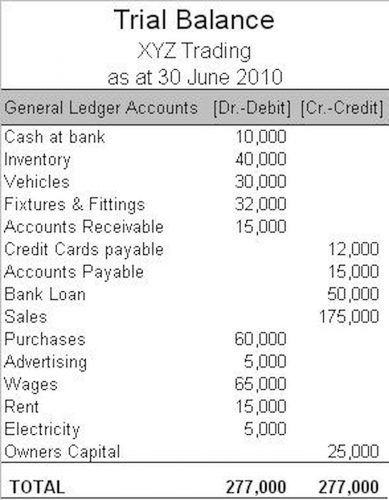
In this case, the company has 800 outstanding shares and 200 treasury shares. Outstanding shares play a crucial role in determining a company’s market capitalization, a key metric for investors assessing a firm’s overall value. The market cap is calculated by multiplying the current market price per share by the total number of outstanding shares. This metric provides investors with insights into a company’s size and relative importance within the market. The weighted average shares outstanding figure smooths out this variance, by simply averaging the share count across the reporting period.

Everything You Need To Master Financial Modeling
- While a company has a certain number of outstanding shares, not all of those shares are available for trading, since they may be closely held by some (large) investors.
- The shares available to investors on the open market are commonly called the float.
- Founded in 1993, The Motley Fool is a financial services company dedicated to making the world smarter, happier, and richer.
- Options and warrants are one aspect of the difference between basic shares outstanding and diluted shares outstanding.
- Authorized shares, sometimes referred to as authorized capital or approved stock, are the maximum number of shares of stock that a company’s charter or articles of incorporation permit it to issue.
- Most notably, short interest usually is measured as a percentage of the float, rather than shares outstanding.
The profit and loss statements in nearly every corporate earnings press release will include both basic and diluted shares outstanding. Typically, a stock split occurs when a company is aiming to reduce the price of its shares. When this takes place, a company’s outstanding shares increase, and a higher degree of liquidity results. By contrast, a reverse stock split occurs when a company seeks to elevate its share price.

Outstanding Shares vs. Issued Shares

Whenever warrants are activated, stocks outstanding increase while the number of treasury stocks decreases. If all these warrants are activated, XYZ will have to sell 100 shares from its treasury to the warrant holders. Basic shares outstanding represent the actual number of shares outstanding during a period. Diluted shares outstanding include “dilutive” securities that could add to the share count — including options, warrants, and convertible debt. Financial lingo can be confusing, but it is nonetheless very important to grasp for those interested petty cash in investing in products like stocks, bonds, or mutual funds.
Bankrate logo
In certain cases, notably for companies that are aggressively issuing shares or debt, public data should be augmented with a reading of SEC filings. But for mature companies with relatively little movement in share count (either basic or diluted), quarterly and annual data from public sources should easily suffice for solid fundamental analysis. Bankrate.com is an independent, advertising-supported publisher and comparison https://x.com/bookstimeinc service. We are compensated in exchange for placement of sponsored products and services, or by you clicking on certain links posted on our site. Therefore, this compensation may impact how, where and in what order products appear within listing categories, except where prohibited by law for our mortgage, home equity and other home lending products. Other factors, such as our own proprietary website rules and whether a product is offered in your area or at your self-selected credit score range, can also impact how and where products appear on this site.


While we strive to provide a wide range of offers, Bankrate does not include information about every financial or credit product or service. Changes in shares outstanding over time also reveal how valuable shares are as a stake of ownership in the company, as the number of shares available directly affects this. A recent example of a reverse stock split is General Electric’s (GE) 1-for-8 reverse stock split during the summer of 2021. Many companies decide to do a stock split to make their stock more affordable for a broader range of investors and to improve liquidity.
Weighted Average Shares vs. Shares Outstanding
- In addition to listing outstanding shares or capital stock on the company’s balance sheet, publicly traded companies are obligated to report the number issued along with their outstanding shares.
- The balance sheet is one of the key documents that investors use to evaluate a company, so it’s important to become familiar with it.
- However, some shareholders own a considerable portion of the outstanding shares and hence have more control over the company’s decisions and outcomes.
- Let us understand the formula that shall act as the basis of our understanding and the formation of the outstanding shares equation through the discussion below.
- Lockups aside, long-standing investors such as founders or venture capital backers may have their own restrictions on selling, or may have signaled that they have no intent to do so.
From the previous example, we know that this company has 1,000 authorized shares. If it offered 300 shares in an IPO, gave 150 to the executives, and retained 550 in the treasury, then the number of shares outstanding would be 450 shares (300 float shares + 150 restricted shares). In a stock split, a company exchanges its stock for more shares (in a forward split) or fewer shares (in a reverse split). The total number of shares in circulation increases or decreases according to the stock split’s exchange ratio.
- Deferred shares benefit investors, particularly in terms of higher potential returns and lower risk of dilution.
- Stock options will be exercised; restricted stock may vest after executives hit certain targets.
- The number of outstanding shares is also important in calculating other financial metrics such as earnings per share.
- The float, for instance, has no bearing on market capitalization or earnings per share.
- Shares Outstanding represent all of the units of ownership issued by a company, excluding any shares repurchased by the issuer (i.e. treasury stock).
- If at the time of incorporation the documents state that 100 shares are authorized, then only 100 shares can be issued.
- When this takes place, a company’s outstanding shares increase, and a higher degree of liquidity results.
- All companies must report their common stock outstanding on their balance sheet.
- When a company executes a stock split, the number of outstanding shares rises.
- Treasury Shares represent the company’s ownership of its stock, while outstanding shares represent the ownership interest of shareholders.
- A higher number of outstanding stocks means a more stable company given greater price stability as it takes many more shares traded to create a significant movement in the stock price.
- The existing shares become less valuable since the same earnings are divided among more shares when the number of outstanding shares increases.
If at the time of incorporation the documents state that 100 shares are authorized, then only 100 shares can be issued. Overall, shares outstanding formula the number of shares outstanding, the metrics you can calculate from it, and related metrics — like the float — provide key insights to investors. Moreover, the number of shares outstanding is extremely useful when monitoring how a company conducts its business, as things like stock splits also affect share numbers. Knowing a company’s number of shares outstanding is key when calculating critical financial metrics and determining share value as a portion of ownership. It excludes closely held shares, which are stock shares held by company insiders or controlling investors. These types of investors typically include officers, directors, and company foundations.
